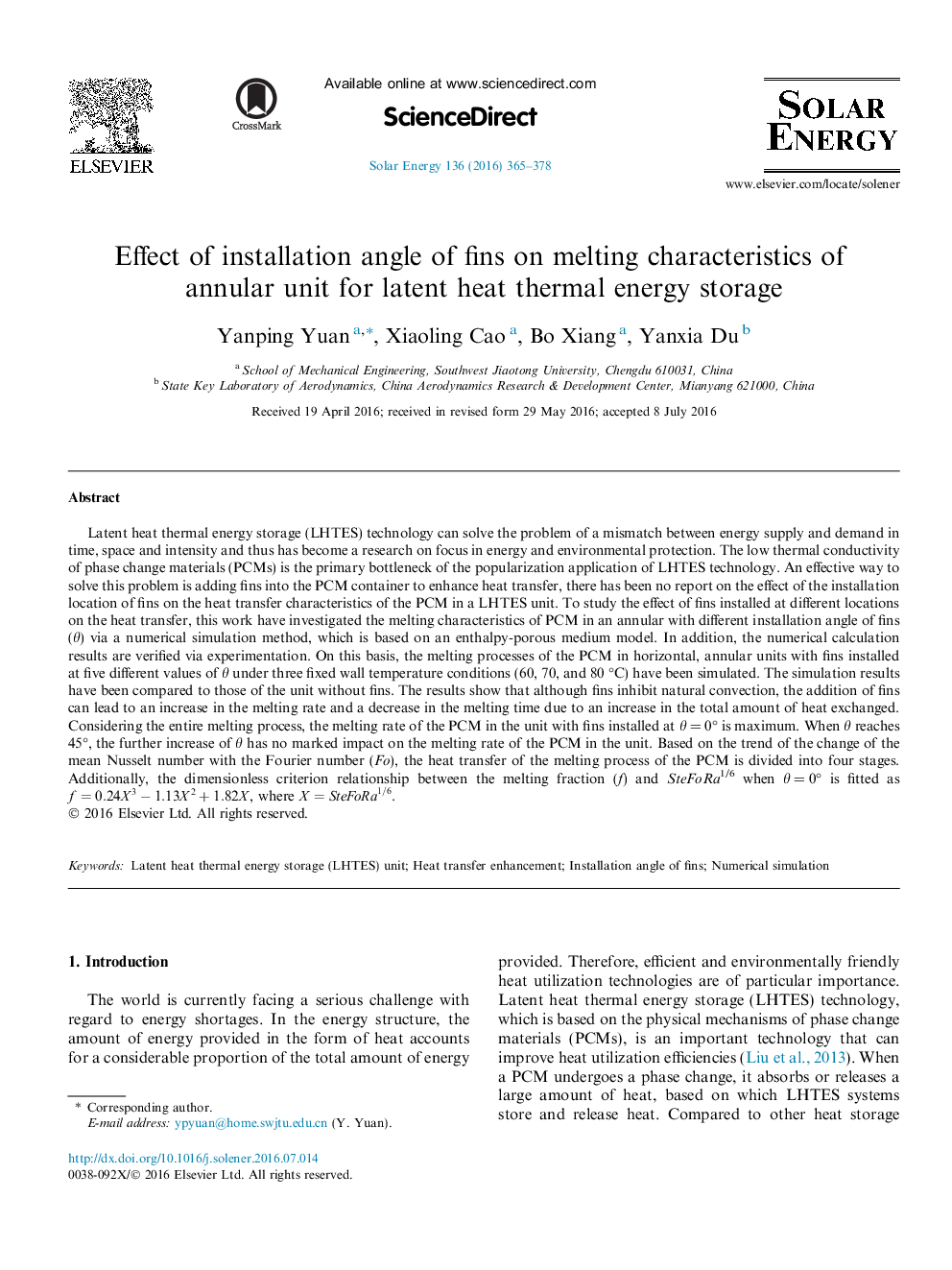| کد مقاله | کد نشریه | سال انتشار | مقاله انگلیسی | نسخه تمام متن |
|---|---|---|---|---|
| 7936453 | 1513082 | 2016 | 14 صفحه PDF | دانلود رایگان |
عنوان انگلیسی مقاله ISI
Effect of installation angle of fins on melting characteristics of annular unit for latent heat thermal energy storage
ترجمه فارسی عنوان
اثر زاویه نصب باله ها بر ویژگی های ذوب واحد حلقوی برای ذخیره انرژی حرارتی پنهان شده
دانلود مقاله + سفارش ترجمه
دانلود مقاله ISI انگلیسی
رایگان برای ایرانیان
موضوعات مرتبط
مهندسی و علوم پایه
مهندسی انرژی
انرژی های تجدید پذیر، توسعه پایدار و محیط زیست
چکیده انگلیسی
Latent heat thermal energy storage (LHTES) technology can solve the problem of a mismatch between energy supply and demand in time, space and intensity and thus has become a research on focus in energy and environmental protection. The low thermal conductivity of phase change materials (PCMs) is the primary bottleneck of the popularization application of LHTES technology. An effective way to solve this problem is adding fins into the PCM container to enhance heat transfer, there has been no report on the effect of the installation location of fins on the heat transfer characteristics of the PCM in a LHTES unit. To study the effect of fins installed at different locations on the heat transfer, this work have investigated the melting characteristics of PCM in an annular with different installation angle of fins (θ) via a numerical simulation method, which is based on an enthalpy-porous medium model. In addition, the numerical calculation results are verified via experimentation. On this basis, the melting processes of the PCM in horizontal, annular units with fins installed at five different values of θ under three fixed wall temperature conditions (60, 70, and 80 °C) have been simulated. The simulation results have been compared to those of the unit without fins. The results show that although fins inhibit natural convection, the addition of fins can lead to an increase in the melting rate and a decrease in the melting time due to an increase in the total amount of heat exchanged. Considering the entire melting process, the melting rate of the PCM in the unit with fins installed at θ = 0° is maximum. When θ reaches 45°, the further increase of θ has no marked impact on the melting rate of the PCM in the unit. Based on the trend of the change of the mean Nusselt number with the Fourier number (Fo), the heat transfer of the melting process of the PCM is divided into four stages. Additionally, the dimensionless criterion relationship between the melting fraction (f) and SteFoRa1/6 when θ = 0° is fitted as f=0.24X3-1.13X2+1.82X, where X=SteFoRa1/6.
ناشر
Database: Elsevier - ScienceDirect (ساینس دایرکت)
Journal: Solar Energy - Volume 136, 15 October 2016, Pages 365-378
Journal: Solar Energy - Volume 136, 15 October 2016, Pages 365-378
نویسندگان
Yanping Yuan, Xiaoling Cao, Bo Xiang, Yanxia Du,
